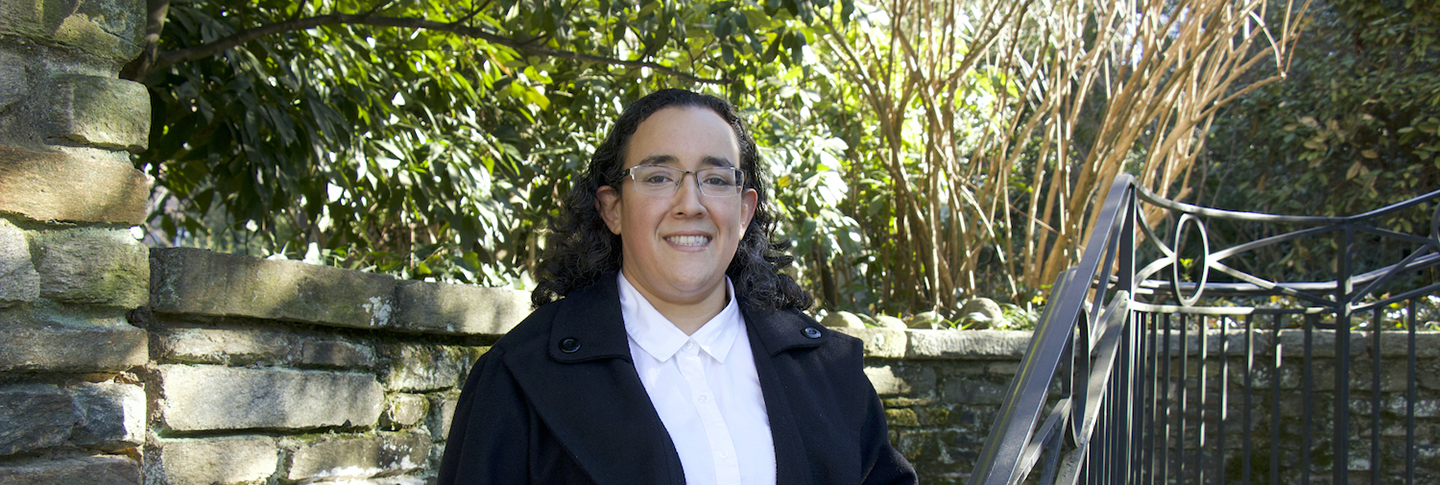Patricia Chirinos Ogata, PhD candidate in anthropology at the University of California, Santa Barbara, is a junior fellow in Pre-Columbian Studies. Her research report, “Wari and Cajamarca: Entanglements and Politics in Northern Peru, AD 750–1000,” highlighted the unusual features of an unsuccessful imperial Wari settlement in Cajamarca territory.
Q&A with Patricia Chirinos Ogata
What was the relationship between the Wari and Cajamarca?
The main topic of my research is how these two political entities, the Wari Empire and the Cajamarca polity, interacted during the Middle Horizon period, approximately between 750 and 1000 CE. They came into direct contact because Wari, as part of its imperial expansion, reached the Cajamarca region, where the local polity—also called Cajamarca—lived and thrived in the northern highlands of Peru. Yamobamba, the site I excavated for my doctoral research, is a Wari site in Cajamarca territory that was built and inhabited only for a relatively short time before being abandoned. My research focuses on figuring out why Yamobamba had such a short-lived occupation, and one of the explanations has to do with the clash between Wari’s imperial agenda and Cajamarca’s own priorities. It seems like the Wari wanted to establish a colony there, but the Cajamarca eventually drove them out.
What does the site of Yamobamba tell us about this relationship?
Yamobamba is distinctive because its architecture, layout, orientation, and size all fit into Wari patterns although located in Cajamarca territory. The Cajamarca Basin was a strategic region to control in order to trade with neighboring polities, especially Huamachuco and Recuay. We know the Cajamarca and their neighbors had been in contact for several centuries before the Wari attempted to settle there. Cajamarca was also geographically well-situated: on the west-east axis, it was located midway between the coast and the Amazonian region, and on the north-south axis it connected the northern highlands with Ecuador, following a number of natural corridors. The Wari were definitely interested in those connections and economic resources, even though they were so far away—about 900 kilometers—from the imperial core in the south highlands.
The architecture and layout of Yamobamba fit into Wari traditions, and the site is almost identical to four other Wari colonies. We need to figure out if this subset of sites represents one specific function or even a particular faction of the Wari Empire. My team and I determined that the site was built very quickly—a group of about 150 people could have built the site in three months, much faster than other Wari construction projects that lasted decades; therefore, this site was definitely something they needed with a certain sense of urgency. However, it was also occupied for just one generation or less, and some structures were left unfinished. Certain divisions within rooms were not built at all, and elements like floors, niches, and water canals were not present, which seems to indicate that something forced the Wari to change their plans midway. The abandonment might have been related to the terrain the site was built on, which easily flooded. But it is also clear that the Cajamarca were not satisfied with the site being in the middle of their territory¾like an embassy that nobody wanted—so they did their best to push the Wari-associated occupants out of the site as soon as possible. However, the abandonment seems to have been gradual: the residents had time to clean and organize the site before leaving.
How does this change our understanding of the Middle Horizon political landscape?
The “successful” stories of imperial conquest are usually the ones being told, but I am interested in what happens when the campaigns are not “successful” from an expansionist point of view: finding instances where we can archaeologically track failed expansion in foreign territories. From a local perspective, these “failed” campaigns were successful because they resisted the empire. In this context, the Cajamarca endured the Wari imperial incursion, but they were also conquered by the Inca and then by the Spanish centuries later. Yet they were able to preserve their culture; resilience allowed them to thrive in spite of these imperial projects. Over the last decade, processes of resistance and resilience have received increasingly more attention in archaeology.
This approach allows us to focus on the intricacies of imperial projects and to humanize who we study: to recognize it was real people making decisions on the spot, changing plans, and adapting to uncertain circumstances. One of the main privileges of being at Dumbarton Oaks has been taking part on enlightening conversations about ancient states and empires—ask anyone around here what “empire” means to them, and everyone has a different answer. I have learned from this by being able to contrast Wari imperial strategies with those of Rome, China, Mesoamerica, or Assyria, and I would not have had that opportunity without being in this wonderful and stimulating setting.
May Wang is postgraduate writing and reporting fellow. Photo by Emily Orr, humanities fellow.

